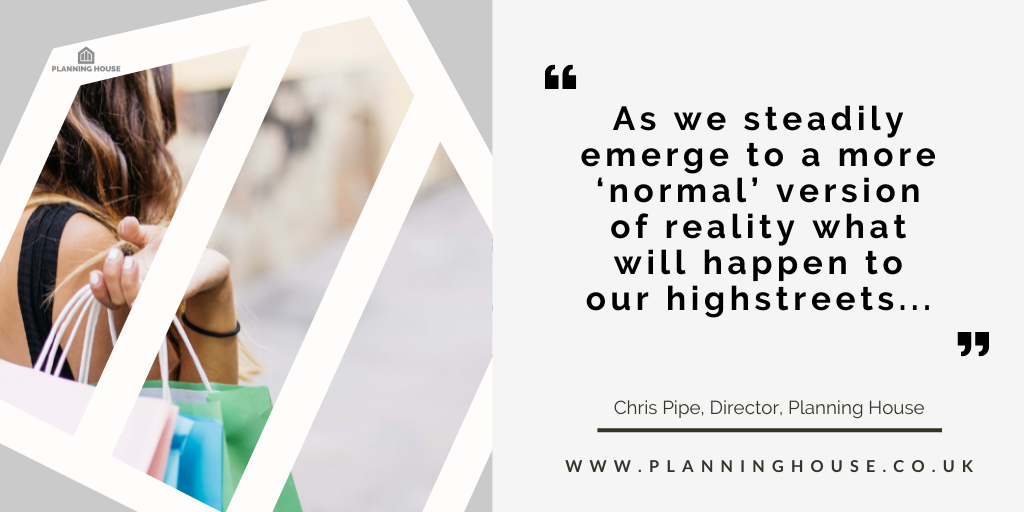In a world dominated by the COVID-19 pandemic, Highstreet shopping quickly became a thing of the past last year, on a scale that could never have been foreseen.
Last Autumn, we discussed how our towns and cities might change in a post-pandemic world, highlighting the very real possibility that shoppers in the UK might opt not to return to in-store shopping.
As we steadily emerge back to a more ‘normal’ version of reality, we know a little more about our shopping priorities going forward and, luckily, research suggests that the Highstreet habits are likely to bounce back.
According to a study by Shopify it seems that despite our increased reliance on online purchasing over the past year, shoppers are keen to get back into their favourite stores for a browse.
Though only 75% of shoppers planned on returning to physical shopping following the easing of restrictions, as opposed to 88% who shopped on the Highstreet before the pandemic, it’s clear that Brits are far from ready to boycott the experience altogether.
Despite this patriotic enthusiasm to inject our Highstreets with life once more, there’s no denying that the experience will likely change dramatically.
In our previous blog post, we discussed the potential lasting cultural shifts the pandemic could cause in our towns and cities. Now, these consequences are a little clearer.
For example, according to Shopify, 51% of consumers plan on shopping locally more often after the pandemic to support local businesses, and for increased convenience. This research also suggested that small, independent retailers are now favoured over shopping centres.
And it’s not only where we will shop that’s likely to be a little different. Shopping habits are set to change, too, with 63% of us hoping for the continuation of health and safety measures like social distancing.
Despite this, physical browsing and product assessment is likely to rebound, Shopify suggests, but 47% of customers plan on checking availability of items in advance before committing to an in-store visit.
But what impact do these changing preferences have in relation to planning?
The most obvious is perhaps the size of our future stores. Shopify’s figures indicate that the British public have become accustomed to measures like social distancing, and the increased desire to check stock before heading in-store may also result in a need for increased stockroom space.
This could see bigger retailers opting to move to larger premises, with smaller, more local brands filling the gaps they leave behind. With customers now favouring local, independent businesses over these larger brands, this is perhaps even more likely.
And with the introduction of the new Use Class E, establishments should in theory be easier to sell, buy and adapt. Without the need to seek planning permission or prior approval to change from, for example, a shop to a restaurant, the market will open up to a wider audience.
Hopefully, these alterations will allow remaining businesses to adapt to changing demands, and exciting new ones to prosper with fewer restrictions and less red tape to navigate.
Related Content
If you want to know more about permitted changes to commercial properties take a look at our free eBook Town Planning, the Basics…Permitted Development & Use Class


